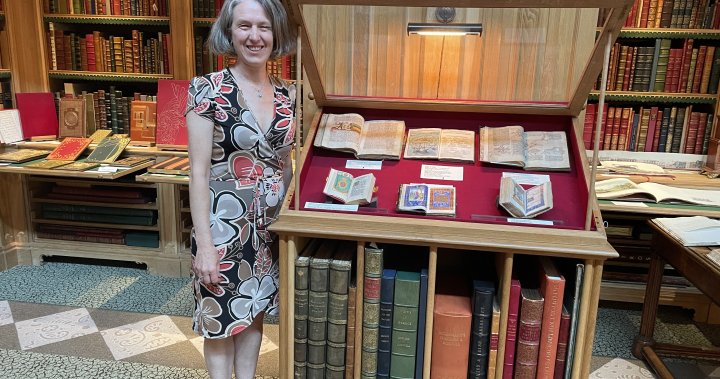In the life of Britain’s most notorious king, it seemed everything had already been written.
But part of King Henry VIII’s story remained untold — until a professor from Ottawa stumbled upon a series of doodles that had evaded royal historians for five centuries.
“I think I was the first person to look at it really carefully,” said Micheline White, who teaches English literature at Carleton University.
White uncovered annotations King Henry VIII had written in the margins of a prayer book from the 1500s. They reveal new details about the infamous monarch’s inner thoughts toward the end of his reign.
“It’s clear that Henry is anxious and thinking about his physical suffering,” White said. “He’s worried that God is punishing him for his sins.”
Henry VIII beheaded two of his six wives: his second wife, Anne Boleyn, and his fifth wife, Catherine Howard. He divorced two others: his first wife, Katherine of Aragon, and his fourth, Anne of Cleves. His third wife, Jane Seymour, died shortly after childbirth, while his sixth wife, Catherine Parr, outlived him.
He also executed advisers who questioned him and monks who refused to convert from Catholicism to the Church of England after he split with the Roman Catholic Church in order to marry Boleyn.

White discovered his doodles by accident while doing research in Buckinghamshire, England. She was studying the religious writings of Parr at the Wormsley Library.
“I was about to leave and thought, ‘I really should look at every page,’” she told Global News.
Inside a prayer book, written by Parr, White spotted faint fingers, known as manicules, pencilled in the margins and recognized the penmanship.
“I thought, ‘These really look like Henry’s,’” she said.
The annotations were jotted down next to passages like this one: “Take away thy plagues from me, for thy punishment hath made me both feeble and faint.”
A religious book of Catherine Parr with stylized text with a faint hand-drawn doodle in the far right margin. Credit: The Trustees of The Wormsley Fund and reproduced with permission from The Wormsley Estate.
A closer look at the drawing in the margin. Credit: The Trustees of The Wormsley Fund and reproduced with permission from The Wormsley Estate.
Another manicule is beside this verse: “Turn away thine anger from me, that I may know that thou art more merciful unto me than my sins deserve.”
When King Henry VIII made the annotations, he had persistent leg ulcers and was nearing the end of his life.
“We think of Henry as being very confident, but in all of these passages, he has annotated places where the speaker is worried he has fallen into error and that he has walked off the right path,” White said.
Historians believe these doodles offer new insight into Henry’s private turmoil.
“I think this discovery is quite important,” said Justin Vovk, a PhD candidate at McMaster University who specializes in royal history.
“It has the potential to really change even the way popular culture looks at Henry.”

White published her findings in the peer-reviewed journal Renaissance Quarterly. University of Miami professor Mihoko Suzuki was one of the editors and calls her “detective work” extraordinary.
“(King Henry) had an earlier career as a brutal husband and a tyrannical husband,” Suzuki said.
“As he was getting older and failing, his marriage with his last wife was much more collaborative and reciprocal.”
Henry drew the manicules while he was at war. White believes they highlight the political influence of his last wife.
“Parr is very unusual in having published three books,” the professor said. “What we see here is that Henry used Parr’s literary activities as part of managing his own government.”
White insists the King also relied on the queen consort as part of his own self-reflection.
“He valued this book so much that he treasured it,” she said.
© 2023 Global News, a division of Corus Entertainment Inc.




